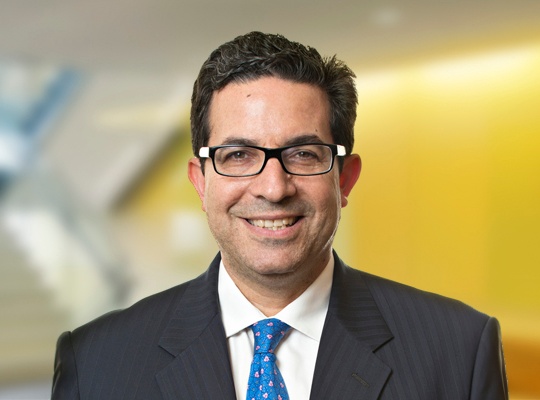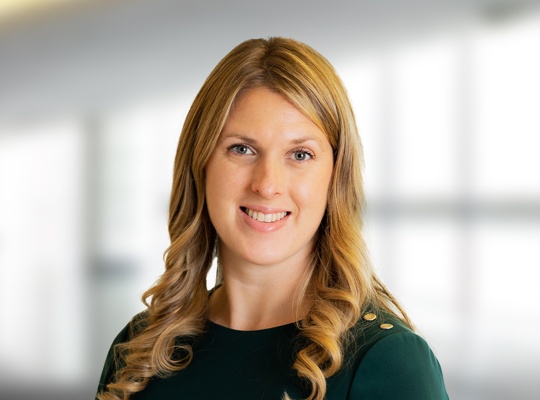Term Asset-backed Securities Loan Facility (“TALF”) Funds Resources
Why is TALF a good opportunity?
Simply put, based on TALF 1.0 (the initial version of the program in effect during 2009–2010), we expect there to be in excess of 100 new TALF funds established as part of TALF 2.0 in 2020, provided that the implementation is largely similar to how the program was operated 12 years ago. The returns in TALF 1.0 based on AAA-rated asset-backed securities (“ABS”) were very attractive.
What is TALF 2.0?
TALF supports the flow of credit to consumers and businesses by allowing the investment fund borrower to buy AAA-rated ABS with significant leverage from the Fed. The investor only needs to post between 5%–25% of the purchase price for ABS, and the Fed will fund the rest through a loan that is non-recourse to the borrower. TALF 2.0 will initially make up to US$100 billion of secured, non-recourse loans available to Eligible Borrowers for a borrowing term of three years.
Who can benefit?
Any companies that can form a U.S.-based subsidiary or have a U.S.-based fund manager and have undeployed capital or are able to raise funds quickly should consider raising a TALF fund, especially if they are active in the credit space (originators or investors). Clients that historically invest only in equities, or in private equity, have asked about forming new TALF funds. Any U.S. entity can be an eligible borrower, but many participants are structured as investment funds.
Dechert lawyers are advising many clients on the formation of new private investment funds that seek to raise money from investors to take advantage of the TALF program and invest in the collateral eligible for the program. However, the nature of the program could create additional opportunities for companies, and our firm has the breadth and depth to also advise:
- ABS issuers on creating collateral that will be eligible for TALF loans.
- Investment banks and TALF agents on compliance procedures for onboarding borrowers.
- Funds, TALF agents and borrowers on the customer agreements required to take advantage of TALF.
- Managers on forming ERISA-compliant, tax efficient and EU securitisation regulation-compliant fund vehicles.
How Dechert can help?
Due to our experience from TALF 1.0 in 2009–2010 and speed to market execution, Dechert is already representing a number of large U.S. asset managers and credit managers on TALF funds. In addition, we have been coordinating investor responses, as well as comments to the Fed, for a number of industry trade associations. This unique perspective allows us to anticipate, identify and address challenges before they become problems – and speaks to our understanding of the complex issues inherent to launching a TALF fund.
We are a market leader in combining the formation of TALF investment funds and the creation of the ABS products that serve as collateral for TALF loans, which puts us in a unique position of understanding both sides of the trade for clients. Our team is available to discuss with you both the range of structures being used in different contexts and the detailed functioning of TALF and its impact on securitization markets and participants. In addition, our team is advising on 1940 Act-related issues, derivatives regulatory issues, ERISA issues, European investor issues and tax issues.
When does TALF start?
The Fed recently announced the first subscription date of June 17, 2020 for funding under the TALF program. The success of many participants in TALF 1.0 during the 2008 financial crisis has already created a sense of optimism about the return potential for investors. In our view, a key to the success of TALF 1.0 funds was the speed at which they made it into the market. It is important to keep in mind that TALF will continue to evolve post-June 17, and we’re here to help you navigate future opportunities and challenges as well.
How does TALF work?
The borrower is required to enter into a customer agreement with a TALF agent, which are generally the primary dealers. The agent is responsible for communicating with the Fed, ensuring the securities are deposited with the Fed’s custodial bank and determining whether a borrower is eligible under the program. When a fund buys an eligible ABS, the primary dealer executes the trade and the fund pays the primary dealer the haircut. The Fed then funds the difference between the purchase price for the ABS and the haircut. The investor then owns a beneficial interest in the ABS.
What is a TALF fund?
A TALF fund is a newly established fund that is structured to satisfy the eligibility requirements of the TALF and be an Eligible Borrower under the program. Although existing funds and investment structures could generally participate in TALF without establishing a new vehicle, by establishing a dedicated TALF fund, sponsors and managers would have the ability to approach their investors and limited partners and raise additional capital. The dedicated fund can also be structured to make the diligence process required by the Fed a more streamlined process.
Additional updates and commentary
The Fed’s newest revisions and clarifications give both potential TALF borrowers and investors a clearer view of the mechanics of the TALF program as we move closer to its first subscription date of June 17, 2020. Dechert will continue to monitor all developments relating to TALF and provide in-depth analysis on the specific changes to particular asset classes and other issues relating to both issuers and investors. We encourage you to follow our regular updates on our TALF Funds Resources website.
Additional relevant links
Webinar recordings
TALF 2.0 – Further Changes, Final Push Before Launch (June 12)
TALF 2.0 – Getting Ready for the June 17 Launch (May 26)
TALF 2.0 – What You Need to Know Now About the Fed’s New FAQs (May 18)
TALF 2.0 Webinar Recording (April 15, 2020)
TALF 1.0 Webinar Recording (April 3, 2020)
Dechert OnPoints
TALF 2.0 Extended Through 2020 and Other Updates (August 11)
FRBNY, Yet Again, Revises the TALF 2.0 Frequently Asked Questions (June 18)
The TALF CLO Trilogy Concludes: Too Little, Too Late (June 17)
TALF CLO Update: The Fed Puts More Devil in its Details (May 28)
CLOs and Term Asset-Backed Securities Loan Facility (TALF) — We're Not That Desperate (Yet) (May 19)
Federal Reserve Releases Updated Term Sheet on the Term Asset-Backed Securities Loan Facility (TALF) (April 10)
Federal Reserve Establishes Term Asset-Backed Securities Loan Facility (TALF) (March 26)





